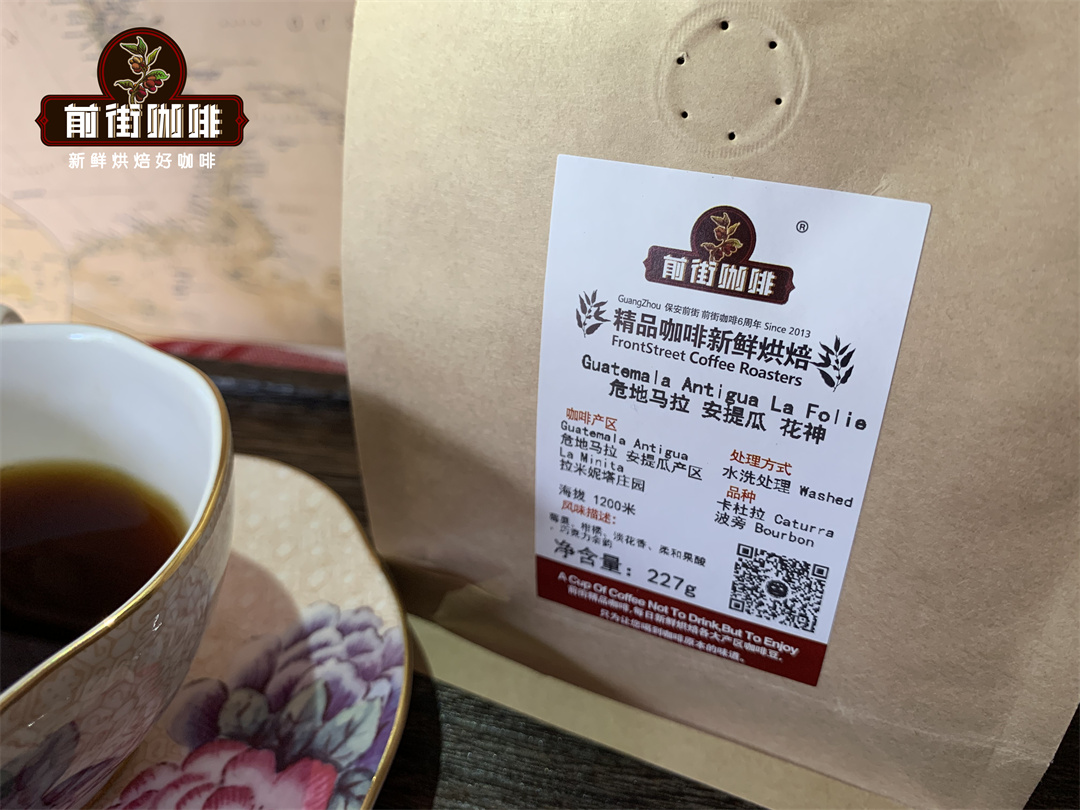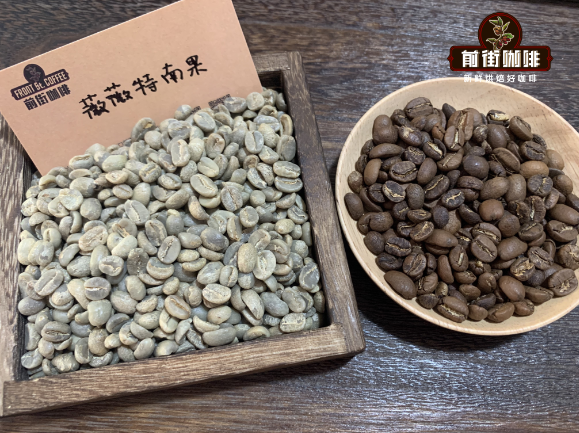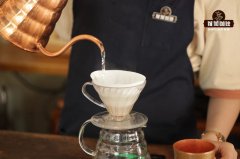Will Guatemalan boutique coffee have the flavor of cut tobacco? the characteristics of several major coffee producing areas in Guatemala
When you finish a cup of coffee, do you feel the feeling that your mouth is full of smoke, like the feeling just after smoking? in fact, this is caused by the caffeine in the coffee.
But when it comes to the taste of cut tobacco, this is very rare in the coffee industry, but less does not mean it does not exist. In Qianjie Coffee, a coffee from Guatemala, it is so special that it has a subtle sense of tobacco and the smell of cut tobacco. The production of this special flavor is mainly related to the local volcanic climate.
Guatemalan coffee is so special that Qianjie coffee is popularized about what producing areas are there, what are the elevations of their coffee, and what are the characteristics of their varieties.
Anacafe is the best marketing national coffee union in the world. They divide the eight major producing areas of Guatemalan coffee, but the only areas that people are familiar with in Guatemala are Antigua (Antigua) and Huehuetenango (Vivette Nango).

FRAIJANES (Farahan Plateau): this coffee-producing plateau surrounds the capital, Guatemala City. The soil in this volcanic area is very fertile, but occasionally has an impact on human safety and infrastructure.
Unfortunately, the planting area of coffee has gradually shrunk due to the change of land use rights in urban development, elevation: 1400-1800 meters, harvest time: December-February, varieties: bourbon, Kaddura, Katuai, Pache.
ANTIGUA (Antigua): this is the most famous producing area in Guatemala and one of the most well-known coffee producing areas in the world. Its name comes from the city of Antigua, famous for its Spanish architecture, and UNESCO is listed as a World Cultural Heritage site. Due to the abuse of the name ANTIGUA on the market, the coffee in this area depreciated, so it was designated as a statutory producing area in 2000. The full name is Genuine Antigua Coffee, this area does produce high-quality coffee, altitude: 1500-1700 meters, harvest time: January-March, varieties: bourbon, Kaddura, Katuai.
SAN MARCOS (San Marco): this area has the warmest climate and the highest rainfall in Guatemala. The hillside facing the Pacific Ocean was the first to get Rain Water, so it blossoms earlier, and precipitation brings challenges to the drying process after harvest, so some coffee farms have to rely on sun drying and mechanical drying. Agriculture plays an important role in this area, crops including cereals, fruit, meat and wool, altitude: 1300-1800 m Harvest time: December-March, varieties: bourbon, Kaddura, Katuai.
NUEVO ORIENTE (New Oriental): the name of this area means "New Oriental". It is presumably located in eastern Guatemala, adjacent to Honduras, where the climate is dry and most coffee is produced by small farmers. Coffee-producing areas did not come to this area until the 1950s, developed relatively late, altitude: 1300-1700 meters, harvest time: December-March, varieties: Bourbon, Kaddura, Katuai, Pache.
HUEHUETENANGO (Vivette Nango): this is one of the more famous producing areas in Guatemala, and the pronunciation of the name is the most intriguing. The name comes from Nahuatl, which means "the land of the ancients (or" ancestors "). The region has the highest non-volcanic mountains in Central America and is very suitable for growing coffee. This area depends on the export of coffee and also produces a lot of amazing coffee such as Injerto (Incht). Altitude: 1500-2000 m, harvest time: January-April, varieties: bourbon, Kaddura, Katuai.

COBAN (Koban): the name of this area comes from the city of Coban, which was influenced by the development of powerful German coffee producers. The influence did not fade until World War II. The dense rainforest also means wet weather, which also challenges the drying process of coffee. This area is remote, so it is expensive and difficult to transport, but there are many high-quality coffee in the area, altitude: 1300-1500 meters. Harvest time: December-March, varieties: Bourbon, Maragsibe, Kaddura, Katuai, Pache.
ACATENANGO: coffee in this area grows in the Acatenango Valley and takes its name from the name of the volcano here. In the past, coffee producing areas sold coffee to "coyotes" (coyotes are coffee buyers who drive trucks everywhere to buy coffee fruits in cash), and coyotes transport the fruits to Antigua for processing, which is relatively rare nowadays. Because ACATENANGO's own coffee is also excellent and widely recognized. Now, on the contrary, it is able to obtain higher profits because of its production and marketing experience, altitude: 1300-2000 meters, harvest time: December-March, varieties: bourbon, Kaddura, Katuai.
ATITLAN (Lake Attilan): the coffee garden in this area is located around Lake Atitlan and is located in the scenic lake area of 1500 meters. It has deeply captured the hearts of writers and tourists over the years. A strong wind blows near noon or afternoon every day. The local name "Xocomil" means "blowing away the wind of sin". Many private nature reserves in the area aim to protect the ecological environment of this area from diversity and prevent deforestation. Coffee production is threatened by many. One of the reasons is rising labor costs and labor competition, urban expansion is also putting pressure on land, and many farmers think it is more profitable to sell land than to continue to grow coffee. Altitude: 1500-1700 m, harvest time: December-March, varieties: Bourbon, Tibika, Kaddura, Katuai.
Important Notice :
前街咖啡 FrontStreet Coffee has moved to new addredd:
FrontStreet Coffee Address: 315,Donghua East Road,GuangZhou
Tel:020 38364473
- Prev

Is the coffee good or concentrated? what are the requirements for the quality of the coffee?
What do you think of when you want to drink healthy, flavored, fast and convenient coffee, take-out coffee? Or instant coffee, wrong, come to Qianjie coffee to tell you in detail, yes, it is Qianjie today to share convenient and fast hanging-ear coffee. You don't need a professional coffee maker, you don't need complicated operations, and you don't have to go to the coffee shop, just cups and hot water. Less than 60
- Next

What kind of water do you use to make coffee? what is the difference in the flavor of coffee brewed with different water?
Ask my friends, what kind of water do you usually use to make coffee at home, mineral water or filtered water? In the front street coffee, hand-brewed coffee water is the choice of Yibao mineral water, why not use other brands of mineral water and filtered water, which is a certain attention. If the type of water is different, how bad will the coffee taste? Let's talk about the coffee in front of the street.
Related
- What brand of black coffee is the most authentic and delicious? what are the characteristics of the flavor of the authentic Rose Summer Black Coffee?
- Introduction to the principle and characteristics of the correct use of mocha pot A detailed course of mocha pot brewing coffee is described in five steps.
- Which is better, decaf or regular coffee? how is decaf made?
- How much is a bag of four cat coffee?
- How about four Cat Coffee or Nestle Coffee? why is it a cheap scam?
- Which is better, Yunnan four Cats Coffee or Nestle Coffee? How about cat coffee? is it a fake scam? why is it so cheap?
- How about Cat Coffee? what grade is a hoax? which instant coffee tastes better, four Cat Coffee, Nestle Coffee or G7 coffee?
- Process flow chart of coffee making-Starbucks coffee making process what coffee tastes good at Starbucks
- The top ten best coffee beans in the world Rose summer coffee or Tanzanian coffee tastes good
- Yunnan four cat coffee is good to drink?_four cat coffee is a big brand? four cat blue mountain coffee is fake?

